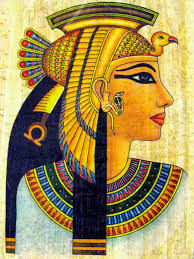Stamp: Cover of King Tutankhamen’s coffin (Egypt 1998)
Cover of King Tutankhamen’s coffin (Egypt 1998)
02 January (Egypt ) within release Stamp Day goes into circulation Stamp Cover of King Tutankhamen’s coffin face value 1 Egyptian pound
| Stamp Cover of King Tutankhamen’s coffin in catalogues | |
|---|---|
| Michel: | Mi:EG 1940 |
| Stamp Number: | Sn:EG 1672 |
Stamp is square format.
Also in the issue Stamp Day:
- Stamp - King Tutankhamen’s Guard face value 20;
- Stamp - King Ramses III. face value 75;
- Stamp - Cover of King Tutankhamen’s coffin face value 1;
|
Data entry completed
50%
|
|
|---|---|
| Stamp Cover of King Tutankhamen’s coffin in digits | |
| Country: | Egypt |
| Date: | 1998-01-02 |
| Print: | Unknown |
| Emission: | Commemorative |
| Format: | Stamp |
| Face Value: | 1 Egyptian pound |
Stamp Cover of King Tutankhamen’s coffin it reflects the thematic directions:
King is the title given to a male monarch in a variety of contexts. The female equivalent is queen regnant (while the title of queen on its own usually refers to the consort of a king). In the context of prehistory, antiquity and contemporary indigenous peoples, the title may refer to tribal kingship. Germanic kingship is cognate with Indo-European traditions of tribal rulership (c.f. Indic rājan, Gothic reiks, and Old Irish rí, etc.) In the context of classical antiquity, king may translate Latin rex or either Greek archon or basileus. In classical European feudalism, the title of king as the ruler of a kingdom is understood as the highest rank in the feudal order, potentially subject, at least nominally, only to an emperor (harking back to the client kings of the Roman Empire). In a modern context, the title may refer to the ruler of one of a number of modern monarchies (either absolute or constitutional). The title of king is used alongside other titles for monarchs, in the West prince, emperor, archduke, duke or grand duke, in the Middle East sultan or emir; etc. Kings, like other royalty, tend to wear purple because purple was an expensive color to wear in the past.
Pharaoh (/ˈfɛəroʊ/, US also /ˈfeɪ.roʊ/; Egyptian: pr ꜥꜣ; Coptic: ⲡⲣ̄ⲣⲟ, romanized: Pǝrro; Biblical Hebrew: פַּרְעֹה Parʿō) is the vernacular term often used for the monarchs of ancient Egypt, who ruled from the First Dynasty (c. 3150 BCE) until the annexation of Egypt by the Roman Republic in 30 BCE. However, regardless of gender, "king" was the term used most frequently by the ancient Egyptians for their monarchs through the middle of the Eighteenth Dynasty during the New Kingdom. The earliest confirmed instances of "pharaoh" used contemporaneously for a ruler were a letter to Akhenaten (reigned c. 1353–1336 BCE) or an inscription possibly referring to Thutmose III (c. 1479–1425 BCE).


